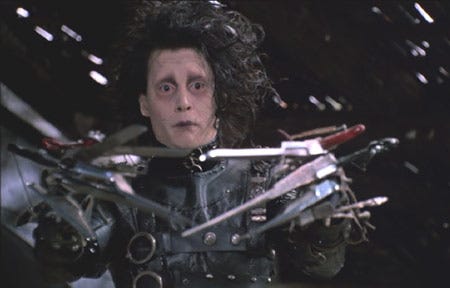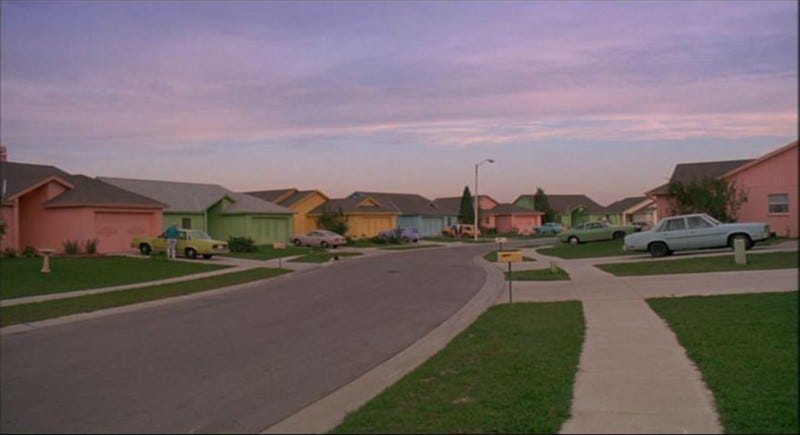The Burton Binge: "Edward Scissorhands"
Each Sunday with “The Burton Binge,” Sam Watermeier will look back at one of Tim Burton’s films, ultimately tracing the return to the auteur’s roots with the October 5 release of “Frankenweenie,” an animated adaptation of Burton’s first live-action short film.
No character is a larger part of Tim Burton than his most indelible creation, Edward Scissorhands. Even those who have not seen the film recognize the image of the titular razor-fingered innocent.

With a Caligarian complexion, a heaven-reaching bed-head and innocently worn S&M attire, Edward is a wonder to behold. He's like the quiet brother of Robert Smith and the love child of Morticia Addams and Edgar Allan Poe.
Edward has teenage angst written all over him. He's a cathartic vision — an outward expression and funhouse reflection of inner turmoil. It's no wonder that the film "began as a cry from the heart, a drawing from Burton’s teen years that expressed the inner torment he felt at being unable to communicate with those around him” ("Burton on Burton").
The most poignant example of this torment is the scene in which Edward tries to hold Kim (the girl he loves), but is too afraid he will hurt her. “I can’t,” he says almost instantly. Edward only feels comfortable touching the inanimate objects around him or the dogs whose hair he cuts. Like Burton, he has difficulty connecting with the “normal” human world.
In the film, Edward’s affinity for art as a primary means of expression reflects Burton’s.
“Edward discovers his creative genius, using his clippers to fashion delicate ice sculptures, surreal haircuts, and wild topiary confections. Though Burton prefers to downplay the connection, the similarity here to a director who has turned his sense of alienation into dazzling pop entertainment is obvious” (as Giselle Benatar wrote in her Entertainment Weekly article, "Cutting Edge").
The film’s suburban setting is also a reflection of Burton’s childhood home. As in all of his films, Burton turns “the real world” into a bizarre, fairy-tale landscape — the way any outsider like him would see it.

As noted in "Cutting Edge," “one of Burton's main concerns in 'Scissorhands' was to capture the exact mixture of surrealism and banality that — to him at least — represents life in the suburbs."
"Suburbia had a very drug-like, surreal feeling about it. Everything was very textural, very tactile. You know, the shag carpeting, the white walls with those strange ceramic birds floating on them and those resin grapes on the wall" (as Burton is quoted in "Cutting Edge").
This focus on material objects is a stroke of genius on Burton's part, as it not only underscores their fragility in Edward's presence but also embodies his vulnerability and that of the teenage archetype he reflects.
While Edward initially represents a literal, physical threat to the surface of this perfect, picturesque world, he is ultimately what it needs — a sprinkle of magic within the mundane.
Of course, nothing is mundane or ordinary from Burton's view. And therein lies the thrill of his outsider dramas. They are fish-out-of-water tales in which the sea and shore are equally mysterious. "Edward Scissorhands" is Burton's most personal, poignant and imaginative journey across both.
Watching the otherworldly film evokes an even more jarring sensation now, in this era wherein reality seems to be valued more highly than surrealism. But that only makes it a more powerful and transporting fairy tale.


